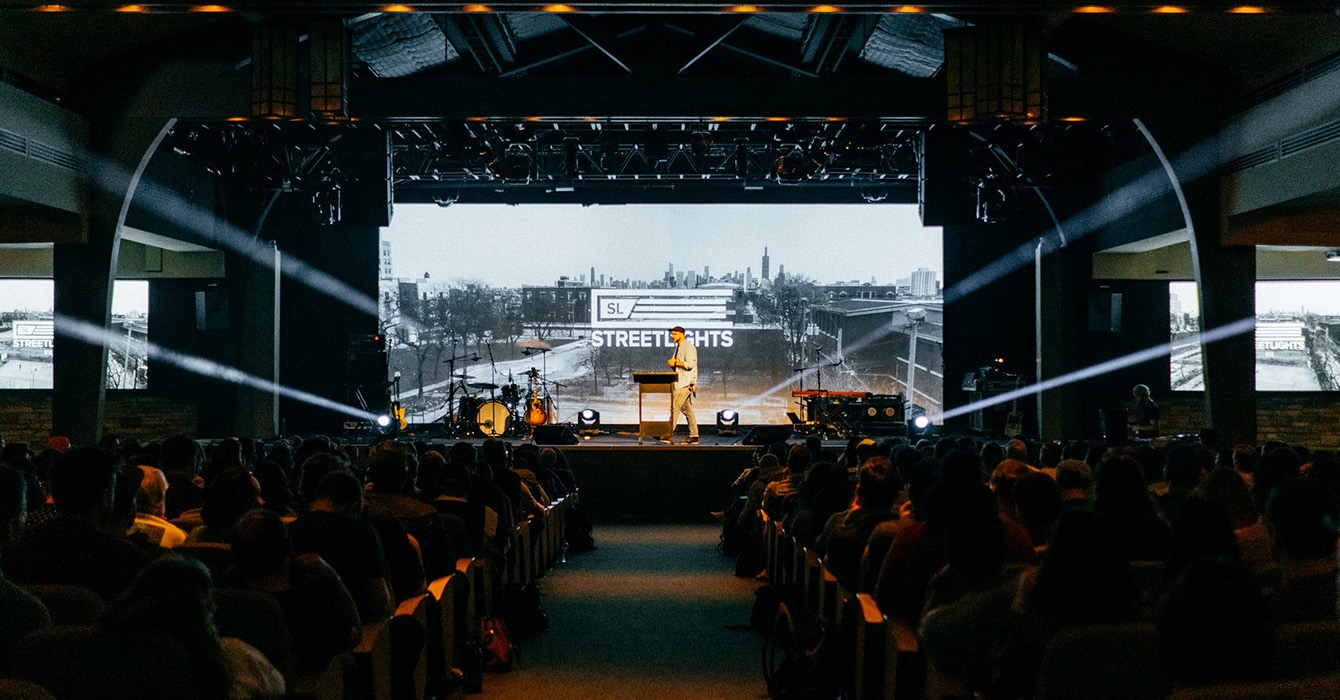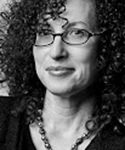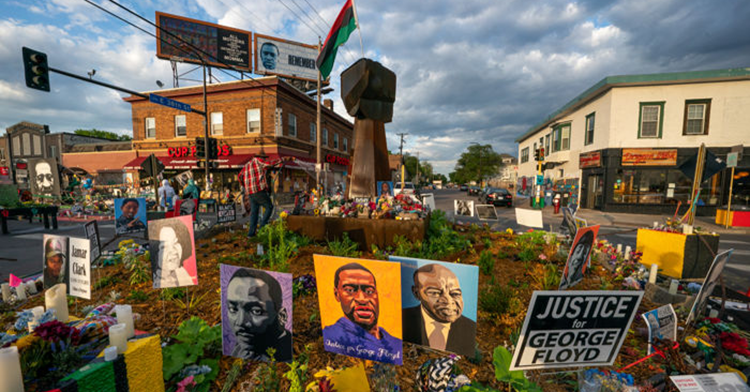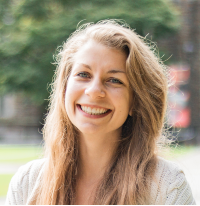Update: In January 2021, the Rev. Michael Pfleger stepped away from his ministry after being accused of sexually abusing a child 40 years earlier. He was reinstated in May 2021 after a Chicago Archdiocese panel found “insufficient reason to suspect” the allegations.
On a Thursday afternoon in May, a dozen high school students trickle into the basement of St. Sabina Catholic Church’s community center on Chicago’s South Side. Hip-hop music reverberates through the room as the teenagers carefully decorate large wooden signs with green, yellow and red paint.
But what may look like an after-school art class is actually part of an anti-violence campaign -- the weekly meeting of Bold Resistance Against Violence Everywhere, or B.R.A.V.E.

The students are getting ready for a peace parade and rally the next day -- they’ll carry the wooden signs, which feature names of local victims of gun violence. The students helped conceive and plan the I Care parade and rally, and they convinced local schools to participate.
The rally is a high-profile public event -- it will be covered on the local television news -- but it’s just one activity of the B.R.A.V.E. Youth Leaders, who work throughout the school year to promote peace and combat violence in many ways.
They have honed their public speaking skills, registered people to vote, learned about gun licensing legislation, and pressed their state and local leaders for additional funding for community programs.
The goal is to address the root causes of violence and thus -- they hope -- to prevent it. And they are partnering with other teens, including activists from Marjory Stoneman Douglas High School in Parkland, Florida, to take the message nationwide.
Is your organization helping youth understand the political, social or economic system in which they operate? What kind of education could you provide?
“We teach them about policy and how the system works,” said Lamar Johnson, 28, the youth coordinator for violence prevention at St. Sabina, who oversees B.R.A.V.E.
“If you’re angry and educated, you can literally change the culture and the system the way you want to. I want you to be angry but know how to use that anger,” he said.

The program seeks to empower young people to use their voices to stop gun violence of all sorts, from the daily gunshots haunting many Chicago communities to the school shootings taking place across the country.
And it is organized and driven by the youth -- many of them traumatized by gun violence themselves.
Can you provide a link between the people who should be leading and the people who actually are?
Johnson is proud of the students, but he admits to being frustrated that this public advocacy has become the responsibility of high school students.
“You shouldn’t have to ask teenagers to [lead the] talk about peace and civility and social justice -- that’s why we have government officials and adults and leaders,” he said.
Building leadership skills
The weekly B.R.A.V.E. meetings serve dual roles -- they are part safe space, where students can speak openly about how gun violence has affected them personally, and part training camp for young people who have found themselves suddenly able to influence a national policy conversation.
In March, B.R.A.V.E. Youth Leaders had a series of highly publicized meetings with student activists from Marjory Stoneman Douglas High School, the Florida school where 17 students and staff members were slain earlier this year. With so much attention focused on them, the students feel the pressure to capitalize on this moment.
“We don’t [want to] be another group or organization that does this but then fades away over time,” said B.R.A.V.E. Youth Leader Ke’Shon Newman, 16.

For the B.R.A.V.E. Youth Leaders, who come from various schools in the Auburn Gresham neighborhood and surrounding communities, gun violence is sadly familiar.
Randell Watts, 17, was 9 when his cousin was fatally shot on the doorstep of Watts’ home. A few years later, Watts’ father was struck by stray bullets at a birthday party. Although his father survived, Watts struggled with anger and depression afterward, and he didn’t like to talk about what had happened.
How could you help individuals deal with trauma while also addressing systemic issues in your community?
Watts started attending B.R.A.V.E. meetings earlier this year, on the day of the school shooting in Parkland, Florida. He credits the program with helping channel his stress and anger into something productive.
“It brings out my best leadership skills,” he said. “Every time I come to B.R.A.V.E., I feel like I should have been here for a long time.”
Through B.R.A.V.E., Watts said he has built up the courage to talk in front of crowds and TV cameras about what happened to his father and cousin.
“As I’ve told my story, people have started to understand where I’m coming from,” he said.

A program for students, by students
B.R.A.V.E. began as the brainchild of the Rev. Michael Pfleger, a priest with a reputation as a radical and militant advocate for his community.
In his three decades ministering at St. Sabina, Pfleger, the church's senior pastor, has been credited with bringing new social services and businesses into the neighborhood. He has also drawn attention to segregation in Chicago with provocative acts of protest, such as the pouring of stage blood on the street and, most recently, a march that shut down the Dan Ryan Expressway.

an activist and priest at St. Sabina.
Photo by Anne Ryan
Pfleger, too, has known Chicago’s violence firsthand. In 1998, his own foster son, Jarvis Franklin, died after being caught in the crossfire between two warring gangs.
Yet Pfleger did not see anyone successfully addressing what he considered to be the root causes of violence: poverty, racism, lax gun control and the tit-for-tat culture that perpetuates Chicago’s shootings.
“Let’s try to put in place some programs to try to prevent what’s happening, not just react to it,” Pfleger recalls thinking. “We needed to institutionalize it, and make sure we have an actual program that does this all the time,” he said.
In 2012, Pfleger hired Lamar Johnson to coordinate youth programs for St. Sabina. Johnson was himself an alumnus of St. Sabina Academy elementary school, and he had experience overseeing student activities as youth pastor at New Eclipse Church, a Baptist congregation on the South Side.
At St. Sabina, his first assignment was to create a violence prevention youth council, Johnson said.
He began to develop the program working with Pam Bosley, St. Sabina’s violence prevention manager. Bosley had become an outspoken anti-gun violence activist after her 18-year-old son, Terrell, was killed while carrying musical instruments into another South Side church in 2006.
In 2012, Bosley’s younger son, Trevon, was in the eighth grade. He and a few friends would make up the inaugural B.R.A.V.E. class, helping to define the program as they went.
“I was asking them what kind of youth council they want to be,” Johnson said. “What do they want to talk about?”
Have you asked the youth in your congregation what they want to talk about? If so, how did you act on that information?
Johnson and Pam Bosley organized B.R.A.V.E. like a student council, wherein students set the program’s priorities and are ultimately responsible for deciding how to allocate their time and resources. Funding for the program comes from grants and private donations.
Over the next several years, the early B.R.A.V.E. members gradually recruited more students, most of whom had already been working to end violence as part of in-house “peace teams” at their respective schools.
Johnson has a loose curriculum for the high school program, with lessons on conflict resolution, community organizing and leadership, among other topics.
Today, the program has divided into three age groups. In addition to the high school B.R.A.V.E. Youth Leaders, which now numbers around 30 students, there is Junior B.R.A.V.E. for middle school students and Baby B.R.A.V.E. for children ages 6 to 8.
Together, the programs aim to ensure that students can build nonviolence skills at every age, with a steady pipeline for participants to move through.
Abigail Visco Rusert, the director of the Institute for Youth Ministry at Princeton Theological Seminary, said that B.R.A.V.E. represents an innovative model for a church-affiliated youth group.
“We have set up young people in congregations to be objects into which we pour spiritual knowledge, instead of treating young people as agents who have the capacity to form and inform even our own spiritual journeys,” she said.
“I think that the challenge to this stereotypical model is a model that lifts up the capacity of young people to follow God into the world.”
Do you recognize youth as agents with capacity? What about younger colleagues?
Indeed, Rusert argues, there is a solid biblical basis for encouraging young people to exercise their agency.
“God is always choosing a young person, an outcast, a woman, an Ethiopian eunuch -- the unexpected person -- to change the world,” she said.
Angry, educated and fighting for change
The students also gain experience advocating for policy change firsthand. With the Illinois midterm and gubernatorial elections approaching, Johnson said that the B.R.A.V.E. Youth Leaders have written letters to candidates, stressing the need to funnel more resources into Chicago’s South and West sides.
Students who are 18 have gotten certified as voter registrars, permitting them to register others to vote at B.R.A.V.E. rallies and events. Several B.R.A.V.E. members also visited City Hall, where they met with the deputy mayor of Chicago, who heard their case for allocating more funding to after-school and violence prevention programs.

As his students have taken on more media appearances and public engagements, from news interviews to public forums, Johnson has begun incorporating speaking skills into the program’s curriculum.
In one recent B.R.A.V.E. meeting, he ran drills meant to teach students to think on their feet, cull the “ums” and “likes” from their language and speak with confidence.
Johnson also leads discussions about the causes of violence that they see in their neighborhoods.
In the room where B.R.A.V.E. Youth Leaders meet, there is a drawing of a tree, titled “Tree of Violence.” Listed on its branches are the surface-level factors related to Chicago’s gun violence problem. Among them: fear, low income, stereotypes, code of silence.
But farther down, on the tree’s roots, are listed the deeper issues that Johnson wants students to see are really to blame: lack of school funds, no black-owned businesses, drugs, corruption of power.
The illustration sums up the B.R.A.V.E. approach. While Johnson knows that his students are frustrated with the violence they see, he believes that they need to understand its true causes before they can fight for change.
“The whole vision,” he said, “is teaching young people and giving them the opportunity to get engaged in community advocacy, civic leadership -- overall [equipping them to ask], “How can I be a peacemaker for my peers?”
Since helping B.R.A.V.E. get off the ground, Trevon Bosley, now a college sophomore, has established himself as a prominent anti-gun violence advocate. Earlier this year, he was asked to speak before hundreds of thousands at the national March for Our Lives in Washington, D.C., and in 2016 was invited to pose a question to President Barack Obama at a public town hall.
Lessons from B.R.A.V.E. have contributed to his success, he said.
“We learned how to speak to elected officials, as well as what they control,” he said. “People tend not to expect young people to have such knowledge.”
‘We have to keep it going’
Randell Watts volunteered to DJ for the I Care rally, blasting upbeat hip-hop as hundreds of students gathered in Renaissance Park, a block away from St. Sabina.

Shortly after 10 a.m., the speeches began. B.R.A.V.E. Youth Leaders selected students and alumni from each of four participating schools to address their peers.
The content of the speeches varied widely. Anthony Lovelace, a former B.R.A.V.E. Youth Leader, reminded the young people that they would soon be tax-paying citizens. “That means the state works for y’all,” he said.
In his speech, Watts denounced the shooters who terrorize his community, as well as the lack of city funding for Chicago schools and “gun laws that don’t make sense.”

Speakers at the rally included local Muslims as well; while B.R.A.V.E. operates through St. Sabina, a Catholic faith community, Johnson is a Baptist pastor, and B.R.A.V.E. members come from a variety of religious traditions.
“In all of the holy books -- in the New Testament, in the Torah, in the Quran -- there are people who stand together with common beliefs of love and respect,” Pfleger said. “If the people of faith can’t come together, don’t ever expect the people on the street to come together.”
Who are the expected and unexpected partners on your journey?
Running the B.R.A.V.E. program through St. Sabina, Johnson said, has been instrumental to its growth and success. The group has built on what Pfleger and St. Sabina already have done for the neighborhood.
Johnson’s advice to someone looking to start a program like B.R.A.V.E.: “It’s got to be part of an organization that already cares about people.”
In June, the B.R.A.V.E. students participated in another rally against violence, attended by the Parkland students, former U.S. Rep. Gabrielle Giffords, hip-hop star Chance the Rapper and singer Jennifer Hudson.
And this summer, several B.R.A.V.E. Youth Leaders (including Trevon Bosley and Anthony Lovelace) will cross the nation in a bus with the Parkland students on the Road to Change tour. At some 50 stops across 20 states, they will educate young people about gun law reform and register them to vote.
In many ways, the tour will bring the mission of the B.R.A.V.E. Youth Leaders to the national level -- a prospect that’s exciting to Johnson.
“That’s the whole goal, to get as many young people as possible involved,” he said. “We have to keep it going.”
Questions to consider
Questions to consider
- Is your organization helping youth understand the political, social or economic system in which they operate? What kind of education could you provide?
- Can you provide a link between the people who should be leading and the people who actually are?
- How could you help individuals deal with trauma while also addressing systemic issues in your community?
- Have you asked the youth in your congregation what they want to talk about? If so, how did you act on that information?
- Do you recognize youth as agents with capacity? What about younger colleagues?
- Who are the expected and unexpected partners on your journey?

















